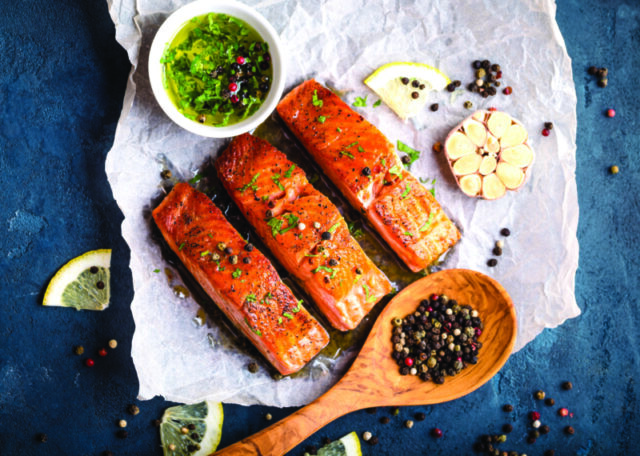
By Anne Marie O’Connor
Like flowy white pants, cozy oversize cardigans and giant straw hats, dieting is having a Coastal Grandmother moment. Calorie counting—an old-fashioned weight loss method in which you write down every morsel you put in your mouth and then do the math—is finding new fans.
After many years of increasingly restrictive diets—keto, Paleo, intermittent fasting, Whole30—counting calories is refreshingly basic, relying on the idea that eating fewer calories than you burn will lead to weight loss. “That’s not untrue, but it’s complicated,” says Jenn LaVardera, M.S., R.D., a Southampton-based registered dietitian. “The concept of ‘burning calories’ is often misunderstood. It’s common to think that we need to exercise to ‘burn’ calories off, but the vast amount of caloric energy we take in goes to fueling basic life functions—like keeping your heart beating and your lungs breathing. Reducing caloric intake can be an effective way to lose weight, and counting calories may have advantages over some fad diets as a tool for weight loss, because it is very possible to eat too much food on other types of programs,” she adds. “It can help get someone back on track and be more aware of how much they take in.” No foods are off-limits, either, so it can be easier to stick to.
While you can track calories granny-style, with a notebook and pencil, apps have made it a lot less time-consuming. There are straightforward calorie-focused apps like MyFitnessPal, or calorie-based weight loss programs like Noom. When you sign up for the latter, a questionnaire determines your weight loss goal; based on that number, your daily caloric intake is calculated. Every day, you enter everything you eat; the app then computes the calories consumed and deducts them from your daily goal. (It also tracks your exercise.)
What sets Noom apart is that it nudges dieters to eat the most nutrient-dense foods, ones that give you the most nutritional value for the fewest calories, versus just the lowest-cal foods, which may have little in the way of vitamin, minerals, protein or fiber (looking at you, rice cakes!). Noom color-codes foods, encouraging you to eat lots of fruits, vegetables and fat-free dairy, while urging moderate portions of lean proteins, low-fat dairy, grains, legumes and healthy fats, and even more restraint with processed and fast foods, sugary foods and drinks. Noom also offers custom meal plans and coaching sessions that help develop healthier eating habits.
Like many dietitians today, LaVardera recommends food journaling over strict calorie counting, which can lead to obsessive dieting and disordered eating. Besides tracking what you eat, food journals prompt you to take note of your hunger and fullness levels, along with your emotional state (are you eating because you’re hungry, or because a work project is a mess?). After (ideally) reviewing with a dietitian, your diary can help you learn to consume appropriate portion sizes and balance your intake of food groups—factors that are key to long-term weight loss. myfitnesspal.com, noom.com



